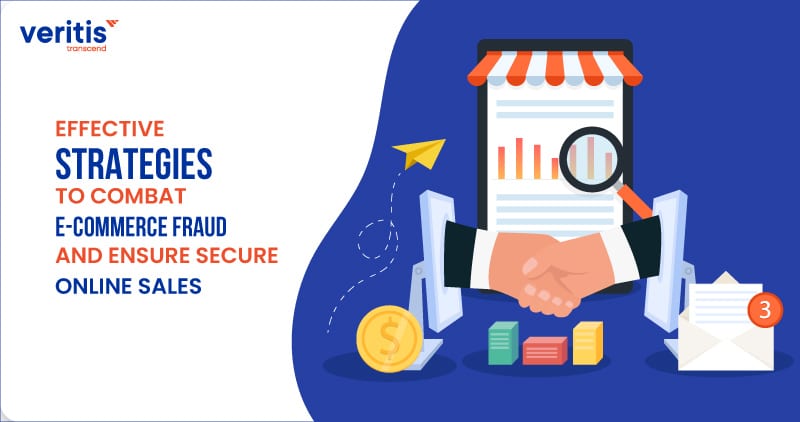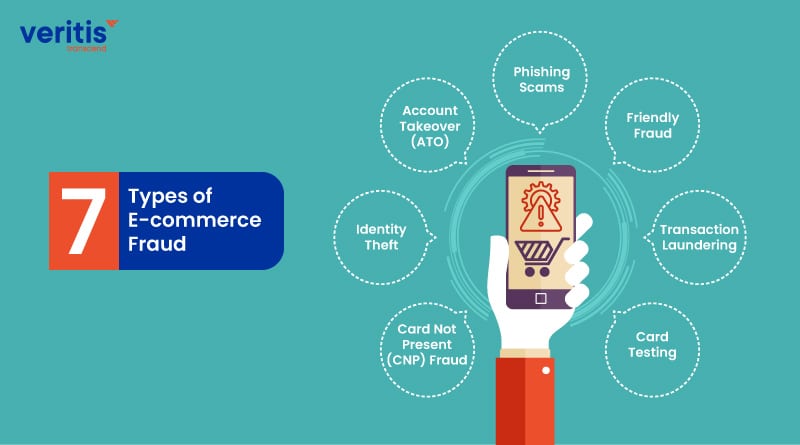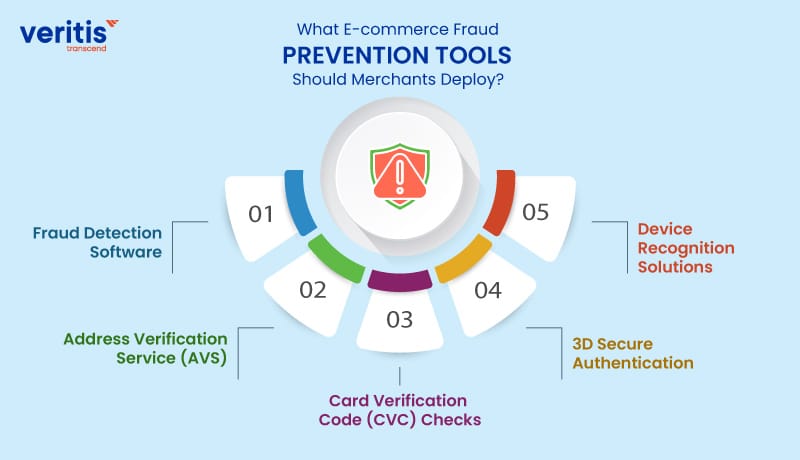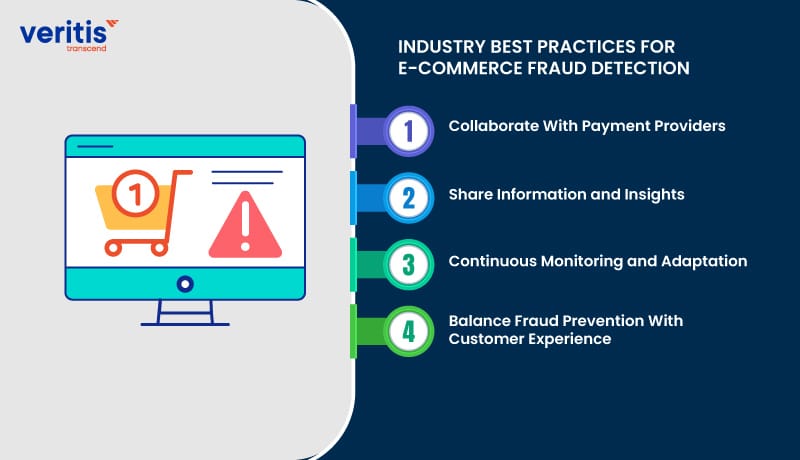
In the dynamic and cutthroat world of e-commerce, staying ahead of the curve is essential. However, one challenge that looms over online store owners is the constant battle against fraudsters. As if running a business isn’t demanding enough, the rise in fraud rates during the COVID-19 pandemic has only added fuel to the fire, escalating the urgency for robust risk management and fraud prevention systems.
Navigating through this domain requires vigilance and strategic planning. Implementing robust fraud prevention measures is no longer a choice but an imperative for survival. In an environment where every transaction carries a potential risk, safeguarding your business against fraudulent activities becomes paramount. The key lies in embracing innovative solutions and staying one step ahead of the fraudsters. By investing in comprehensive fraud risk management strategies and leveraging advanced technologies, online store owners can effectively fortify their defenses and mitigate potential threats.
Success in the constantly changing digital ecosystem hinges on adaptability and foresight. As the e-commerce domain evolves, proactive risk management practices are essential. Doing so isn’t merely wise; it’s crucial for ensuring sustainable growth and resilience. We’ll explore effective strategies to combat eCommerce fraud protection and ensure secure online sales.
What is E-commerce Fraud?
E-commerce fraud is any fraudulent or illegal activity conducted during an online transaction. This can include unauthorized credit card use, identity theft, account takeover, phishing scams, etc. Fraudsters exploit online payment security systems vulnerabilities, customer data breaches, and weak security measures to perpetrate their schemes, resulting in financial losses and damage to businesses’ reputations.
7 Types of E-commerce Fraud

1) Card Not Present (CNP) Fraud
In this type of fraud, perpetrators use stolen credit card details to make purchases online without physically presenting the card. They exploit the fact that online transactions don’t require the physical presence of the card, making it easier to use stolen information undetected.
2) Identity Theft
Threat actors steal personal information, such as login credentials or Social Security numbers, to perpetrate fraud. With this stolen data, they impersonate legitimate customers to conduct unauthorized transactions, potentially causing financial and reputational damage to the victim.
3) Account Takeover (ATO)
In ATO fraud, threat actors gain unauthorized access to a customer’s account by exploiting weak passwords, security vulnerabilities, or phishing attacks. Once inside, they can make fraudulent purchases, change account details, or steal sensitive information stored within the account.
4) Phishing Scams
Phishing scams involve deceptive emails, websites, or messages designed to trick individuals into divulging personal or financial information. Fraudsters then use this information for various fraudulent activities, including identity theft, account takeover, or unauthorized transactions.
5) Friendly Fraud
Also known as chargeback fraud, this type occurs when a customer data protection falsely claims that a legitimate transaction was unauthorized, resulting in a chargeback and financial loss for the merchant. It often involves customers exploiting loopholes in the chargeback process to receive refunds while retaining the purchased goods or services.
6) Transaction Laundering
Criminals engage in transaction laundering using legitimate e-commerce websites to process payments for illegal goods or services. They disguise the nature of these transactions to evade detection, posing a significant challenge for merchants and payment processors in identifying and preventing illicit activities.
7) Card Testing
Fraudsters use automated bots or manual techniques to validate stolen credit card details through small transactions. These tests help verify whether the stolen card details are active and valid, allowing fraudsters to confidently carry out larger, unauthorized transactions.
Understanding these various types of e-commerce fraud is crucial for online fraud awareness for store owners and merchants to implement effective fraud risk management strategies and payment fraud prevention measures to safeguard their businesses and customers against financial losses and reputational damage.
Useful Link: The Role of AI and ML in Detecting Retail Fraud
How to Detect E-commerce Fraud

Detecting eCommerce fraud requires a multi-layered approach combining advanced technology, data analytics, and human vigilance. Here are some practical methods for detecting and preventing eCommerce fraud:
1) Fraud Scoring Models
These models leverage ML algorithms to analyze transaction data and assign a risk score to each transaction based on the amount, payment method, device used, and customer behavior. By continuously learning from past transactions, these models can adapt to new fraud patterns and accurately identify suspicious activity in real-time.
2) IP Geolocation Verification
Verifying the geographic location of the customer’s IP address helps detect suspicious transactions originating from high-risk regions or using anonymizing services such as VPNs or proxies. By comparing the IP address location with the customer’s provided address or previous transaction history, merchants can assess the likelihood of fraud and take appropriate action, such as requiring additional verification steps.
3) Device Fingerprinting
Device fingerprinting techniques create a unique identifier for each transaction device based on attributes such as device type, operating system, browser version, and installed plugins. By tracking and analyzing these fingerprints, merchants can detect anomalies such as multiple accounts linked to the same device or sudden changes in device behavior, signaling potential fraudulent activity.
4) Behavioral Analysis
Analyzing customer behavior and transaction patterns helps identify deviations from regular activity that may indicate fraud. For example, huge orders, frequent returns, or rapid changes in shipping addresses could raise red flags. Merchants can proactively identify and mitigate potential risks by monitoring and analyzing these behavioral patterns.
5) Manual Review Processes
Despite the advancements in automated fraud detection systems, manual review processes remain crucial for identifying and investigating high-risk transactions that automated systems may have flagged. Trained fraud analysts assess the legitimacy of flagged transactions by reviewing additional documentation, contacting customers for verification, or conducting further investigations to determine whether the transaction is fraudulent or legitimate.
Useful Link: Top 6 IoT Trends to Drive Innovation for Business in 2024
What E-commerce Fraud Prevention Tools Should Merchants Deploy?

Merchants should invest in a comprehensive suite of eCommerce fraud prevention tools and technologies to mitigate risks and protect their businesses. Some essential tools include:
1) Fraud Detection Software
Advanced fraud detection software employs sophisticated algorithms and machine learning techniques to analyze real-time transaction data, identifying patterns and anomalies indicative of fraudulent activity. These systems can automatically flag suspicious transactions for further review or decline, helping merchants prevent fraudulent charges while minimizing false positives.
2) Address Verification Service (AVS)
AVS tools compare the billing address provided by the customer during checkout with the address on record with the credit card issuer to enhance data protection. By confirming the accuracy of the billing address, merchants can decrease the risk of fraudulent transactions, especially in cases where fraudsters may use stolen credit card information with incorrect or mismatched billing addresses.
3) Card Verification Code (CVC) Checks
Requiring customers to provide the CVC, also known as the card security code, adds an extra layer of security during checkout. Since the CVC is typically not stored in the merchant’s database or the card itself, its verification helps confirm the transaction’s legitimacy. It deters fraudsters who may have stolen credit card information but lack the CVC.
4) 3D Secure Authentication
3D Secure protocols such as those verified by Visa or Mastercard Secure Code add a layer of authentication for online transactions. During checkout, customers are prompted to enter a one-time password or authentication code sent to their mobile device or email address, confirming their identity and reducing the risk of unauthorized purchases. Implementing 3D secure authentication helps merchants shift liability for fraudulent chargebacks to the card issuer and provides added peace of mind for merchants and customers.
5) Device Recognition Solutions
Device recognition solutions track and analyze various attributes of the device used in transactions, such as device type, operating system, browser version, and IP address. By monitoring these attributes over time, merchants can detect suspicious behavior, such as multiple accounts linked to the same device or sudden changes in device characteristics, signaling potential account takeover attacks or fraudulent activity. Deploying device recognition solutions enhances payment fraud prevention efforts by enabling merchants to proactively identify and mitigate risks associated with compromised devices.
By deploying a comprehensive suite of eCommerce fraud prevention tools and technologies, merchants can effectively mitigate risks, protect their businesses from fraudulent activity, and provide customers with a secure payment processing shopping experience. Continuously updating and refining fraud prevention strategies based on emerging threats and evolving fraud patterns is essential for staying ahead of fraudsters in the eCommerce field.
Useful Link: What is Generative AI: An Ultimate Guide to Amazon Generative AI Tools
How to Protect Your Business From E-commerce Fraud

Protecting your business from eCommerce fraud requires a proactive and holistic approach to security. Here are some essential measures to safeguard your eCommerce operations:
1) Stay Updated on Security Threats
To stay current about eCommerce fraud trends, tactics, and vulnerabilities, monitor industry news, attend security conferences, and engage in online forums.
2) Implement Strong Authentication Measures
To prevent unauthorized access to accounts, enforce strong password policies, implement multi-factor authentication, and educate customers about security best practices.
3) Secure Your Website
Use SSL encryption to secure data transmission, regularly update software and security patches, and conduct periodic security audits to detect and address vulnerabilities in your eCommerce platform.
4) Monitor Transactions in Real-Time
Implement real-time transaction monitoring to detect and respond to suspicious activity, reducing the likelihood of successful fraud attempts.
5) Educate Your Staff and Customers
Train your employees to recognize and report signs of eCommerce fraud and educate your customers about typical fraud schemes and how to protect themselves from becoming victims.
Useful Link: How Financial Risk Management Software Mitigates Fraud in the Financial Industry
Industry Best Practices for Ecommerce Fraud Detection

In addition to implementing robust fraud prevention solutions and security measures, merchants can adopt industry best practices to enhance eCommerce fraud detection techniques:
1) Collaborate With Payment Providers
Work closely with payment service providers and financial institutions to leverage their expertise, data analytics capabilities, and fraud prevention solutions.
2) Share Information and Insights
Participate in industry forums, share fraud intelligence with other merchants, and collaborate with law enforcement agencies to exchange information and stay ahead of emerging threats.
3) Continuous Monitoring and Adaptation
Regularly review and update your fraud prevention strategies, adjust fraud detection parameters based on evolving threats and trends, and conduct post-mortem analyses of fraud incidents to identify areas for improvement.
4) Balance Fraud Prevention With Customer Experience
Strive to balance fraud prevention measures and a seamless customer experience, minimizing friction during checkout while maintaining robust security protocols.
Essential Ecommerce Fraud Detection and Prevention Strategies
To summarize, effective eCommerce fraud detection techniques and prevention require a combination of advanced technologies, data analytics, proactive security measures, and industry collaboration. By implementing robust fraud prevention solutions, staying vigilant against emerging threats, and adopting best practices, merchants can safeguard their businesses against eCommerce fraud protection and ensure secure online sales.
Conclusion
In the era of eCommerce, fraudsters are constantly changing their tactics to exploit vulnerabilities and defraud merchants. However, by staying informed, implementing comprehensive fraud prevention strategies, and fostering collaboration within the industry, merchants can effectively combat eCommerce fraud and protect their businesses from financial losses and reputational damage. Success hinges on proactive prevention, continuous monitoring, and adaptation to emerging threats. Stay vigilant, stay secure, and keep your online sales thriving in a safe and trusted environment.
Veritis, the winner of esteemed awards like the Stevie and Globee Business Awards, offers cutting-edge solutions to fortify your business against fraud. Partner with us to ensure robust protection for your online store and maintain customer trust.
Looking for Support? Schedule A Call
Also Read:
- 7 Essential AI Tools Every CTO Should Be Familiar With
- Overcoming Challenges: Implementing Generative AI in Healthcare
- AI and IoT Collaboration in Addressing Industry Challenges
- The Future of IT Financial Management: Trends and Innovations
- Impact of AI in Telecommunications Industry
- AI and Cybersecurity: Defending Against Evolving Threats